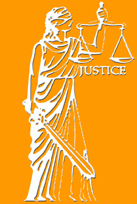
|
The Legacy of New
Rome, Constantinople
|
|
On April 2, 1453 the day after Orthodox Easter, Ottoman Sultan Mehmet began his siege against the imperial city of Constantinople, New Rome. From the outset the Greeks of Constantinople defiantly resisted the aggressive ambitions of the Sultan. Mehmet sent messages to the Emperor guaranteeing the safety of the Christian population if the Greeks surrendered. Led by their Emperor, the population of Constantinople refused to surrender. For fiftyfive days, an army of 7,000 Greek soldiers held out against 80,000 Ottoman soldiers led by the aggressive and ambitious Sultan Mehmet. The Emperor Constantine Palaiologos turned down Mehmet's promise of security if he surrendered the city. Mehmet warned that Islamic tradition requires that cities aquired by force are subject to three days of pillage. The Emperor Constantine declared "I shall never give you the city". Finally, on 29 May 1453 Constantinople
fell to the Turks. The Ottoman Turks conquered the city and
proceeded to plunder the great treasures of the city, the Churches,
the libraries, and George Scholarius was the leader of the anti-Unionists who rejected both the false doctrines of the Latin Church and the Church of Rome's blackmail to withhold aid unless the Greeks capitulated and accepted the Latin Church's theological innovations. It can be argued that the fall of Constantinople and the destruction of Byzantium had more to do with the treachery of the Latins than with the Ottoman Turks. It was the invasion and occupation by the Latins during the Fourth Crusade that left the Empire of New Rome weak and unable to restore its position. The city of Constantinople was founded by Constantine the Great in 330 AD. From the very beginning it was dedicated to the "glory of God". The Church of Constantinople included Patriarchs such as Saints Gregory the Theologian, John Chrysostom, Ignatius, and Photius the Great. The late historian and scholar Steven
Runciman wrote, "It was too, a great cosmopolitan city where along with merchandiseideas were freely exchanged and whose citizens saw themselves not as a racial unit but as the heirs of Greece and Rome, hallowed by the Christian faith." The Fall of Constantinople, 1453. Steven Runciman The historical significence of Constantinople and the Empire ofNew Rome to western civilization is immense. Arab Muslims waged war against Constantinople in 674 and 718 AD. If the city had fallen to Islam during these assaults Europe would have fallen and America would likely have been discovered by Muslims. "And
indeed the significence of the Byzantine victory of 678 cannot
be overestimated. For the first time an Arab advance was really
checked and the invasion which had swept forward There is no doubt that the Arab attack which Constantinople experienced then was the fiercest which had ever been launched by the infidels against a Christian stronghold, and the Byzantine Capital was the last dam left to withstand the rising Muslim tide. The fact that it held saved not only the Byzantine Empire, but the whole of European civilization." History of the Byzantine State. George Ostrogorsky "Blocked from Europe by the impregnable walls of Constantinople and the unyielding spirit of the Emperor and his people, the armies of the Prophet were obliged to travel the entire length of the Mediterranean to the Straits of Gibraltar before they could invade the continent- thus extending their lines of communication and supply almost to breaking point and rendering impossible any permanent conquests beyond the Pyrenees. Had they captured Constantinople in the seventh century rather than the fifteenth, all Europe- and America- might be Muslim today". Byzantium, the Early Centuries. John Julius Norwich In the ninth and tenth centuries, the
Greeks converted the Slavic world to Christianity. The conversion
of Russia was of immense religious, historical, and political
significence. Russian envoys
report to Prince Vladimir Eleven centuries of civilization, culture, theology, and learning came to an end on 29 May 1453. The Emperor Constantine Palaiologos who had refused to leave the city died in battle defiant to the end. He was canonized shortly after by the Patriarch Georgios Scholarios Gennadius. Myths and legends were told about the Emperor Constantine during the dark centuries of Tourkokratia. The myth of "The Marble Emperor" which stated that Constantine had been saved by an Angel and would one day awaken and chase the Turks to the Red Apple Tree came into existence. Other myths told of the Priest in the Church of Aghia Sophia who had dissapeared into the walls of the Church so that the Eucharist would not be defiled by the Muslims. Sultan Mehmed "the Conqueror" became feared throughout Europe following the conquest. It could be said that he was the Osama Bin Laden of his day. The most effective resistance to Mehmed came from Romanian Prince Vlad who was known as the "Impaler" but soon all the Balkans had fallen to the Ottomans. Orthodox Russia soon declared itself "the Third Rome", and defender of Orthodoxy. In 1589, Patriarch Jeremias of Constantinople gave his blessing to the Russians to establish a Patriarchate and to the Russian claims to leadership in the Orthodox world. In 1774, 1853, and 1878, the Russians challenged Muslim rule in Constantinople but the Muslims received the support of the western powers who pursued anti-Christian policies in the east. Then in 1919, the Hellenic nation which had achieved independence one century earlier took control of Smyrna in Asia Minor. The western powers however intervened and supported Mustafa Kemal's terrorists in Anatolia who slaughtered the Greek populations of Smyrna andPontus, and who with the assistance of the western powers seized Constantinople from the Greeks forever. The Greek dream of retaking Constantinople vanished as did the dream of worshipping Jesus Christ in the Great Church of Aghia Sophia. Mustapha Kemal converted Aghia Sophia into a Museum in 1936. Regardless, the ground of Aghia Sophia remains hallowed. In 1920, National
Geographic published an article by James Hosmer Penniman which
stated, "For more than thirteen centuries it has been
the most magnificent Church in the world and Saint Peter's,
Cologne Cathedral, and York Minister are even now surpassed
by the richness An Anglican Priest, Reverand John Douglas wrote in 1919, "Without treachery to England's history and England's boasted calling, that fleet cannot sail away and leave the great Greek city of Constantinople a Turkish city, its Christian people in the underworld, and its mother Church a Mosque". In 1930, Mustapha Kemal renamed the city Istanbul, which comes from the Greek expression "Is tin poli". In 1955, five centuries after the fall of the city, a pogrom sponsored by the Turkish government led to the final assault against the city's Greek Orthodox population. During the 1960's, tens of thousands of Greeks were expelled from the city. Today, there are only 2,500 Greeks left in a city that has a population of over ten million. The Patriarchate has remained in the city and has continued to perform its international role among autocephalous Orthodox Churches but it very likely in its last days. The closure of the Patriarchal school of theology on the island of Halki has deprived the Patriarchate of Priests. The city that was once the center of Christian civilization is now symbolizes the status of Eastern Christians who have been steadily forgotten, if not abandoned, by their western counterparts. |




